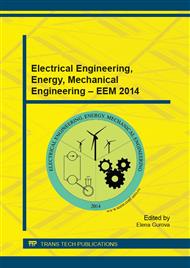[1]
J. Hirsch, Thermomechanical control in aluminium sheet production. Material Science Forum 426-4 (2003), 185-194.
DOI: 10.4028/www.scientific.net/msf.426-432.185
Google Scholar
[2]
J. Hirsch, Texture evolution during rolling of aluminium alloys. Light Metals 2008, Warrendale PA USA, 2008, pp.1071-1077.
Google Scholar
[3]
O. Engler, N. Mertens, P. van Dam, Texture-based design of a convoluted cut-edge for earing-free beverage cans. Journal of Materials Processing Technology 211 (2011) 1278-1284.
DOI: 10.1016/j.jmatprotec.2011.02.011
Google Scholar
[4]
V. Glavas, T. Bohlke, D. Daniel, C. Leppin, Texture Based Finite Element Simulation of a Two-Step Can Forming Process. Material Forming - Esaform 2012. Pts 1&2 (2012), 504-506.
DOI: 10.4028/www.scientific.net/kem.504-506.655
Google Scholar
[5]
K. Inal, P.D. Wu, K.W. Neale, Simulation of earing in textured aluminum sheets. International Journal of Plasticity 16 (2000) 635-648.
DOI: 10.1016/s0749-6419(99)00065-0
Google Scholar
[6]
S. Zhang, S. Huang, D. Li, Y. Peng, An incremental-update formulation to simulate earing behaviour with crystal plasticity model. Proceedings of the Institution of Mechanical Engineers Part C-Journal of Mechanical Engineering Science 225 (2011).
DOI: 10.1177/0954406211403666
Google Scholar
[7]
Y.M. Aryshensky, V.Y. Aryshensky, I.I. Kalushsky, Definition of elastic and plastic characteristics orthotropic materials. Paper presented at the Research on plastic and metal working field, Tula, TPI 1982 pp.129-153.
Google Scholar
[8]
Y.M. Aryshensky, F.V. Grechnikov, V.Y. Aryshensky. Obtaining rational anisotropy in sheets., edn. Metallurgy, Moscow, (1987).
Google Scholar
[9]
F.V. Grechnikov, Ya.A. Yerisov, E.V. Aryshensky, Design of sheet and strip rolling modes for drawing articles with minimal earing. Herald of Samara State Aerospase University name after academic SP Korolev (national research university) 26 (2011).
Google Scholar
[10]
Grechnikov F.V. Deformation of anisotropic materials (intensification reserves). Machinostroenie, Moscow, (1998).
Google Scholar
[11]
R.A. Adamesku, P.V. Geld., E.A. Mitushkov, Anisotropy of physical metal properties. Metallurgy, Moscow (1985).
Google Scholar
[12]
M. B. Chen, J. Li, Y. M. Zhao, H. Yuan, W. C. Liu, Comparison of texture evolution between different thickness layers in cold rolled Al-Mg alloy. Materials Characterization 62 (2011) 1188-1195.
DOI: 10.1016/j.matchar.2011.10.007
Google Scholar
[13]
V.N. Serebryaniy, S.F. Kurtasov; М.А. Litvinovich, Analysis of odf-errors under rotation of pole figures with use of statistical method of ridge estimations. Zavodskaya Laboratoriya 73 (2007) 29–35.
Google Scholar
[14]
S.F. Kurtasov. Quantitative Analysis of the Textures of Rolled Materials Having Cubic Symmetry of Crystal Lattice. Zavodskaya Laboratoriya 73 (2007) 29–35.
Google Scholar


